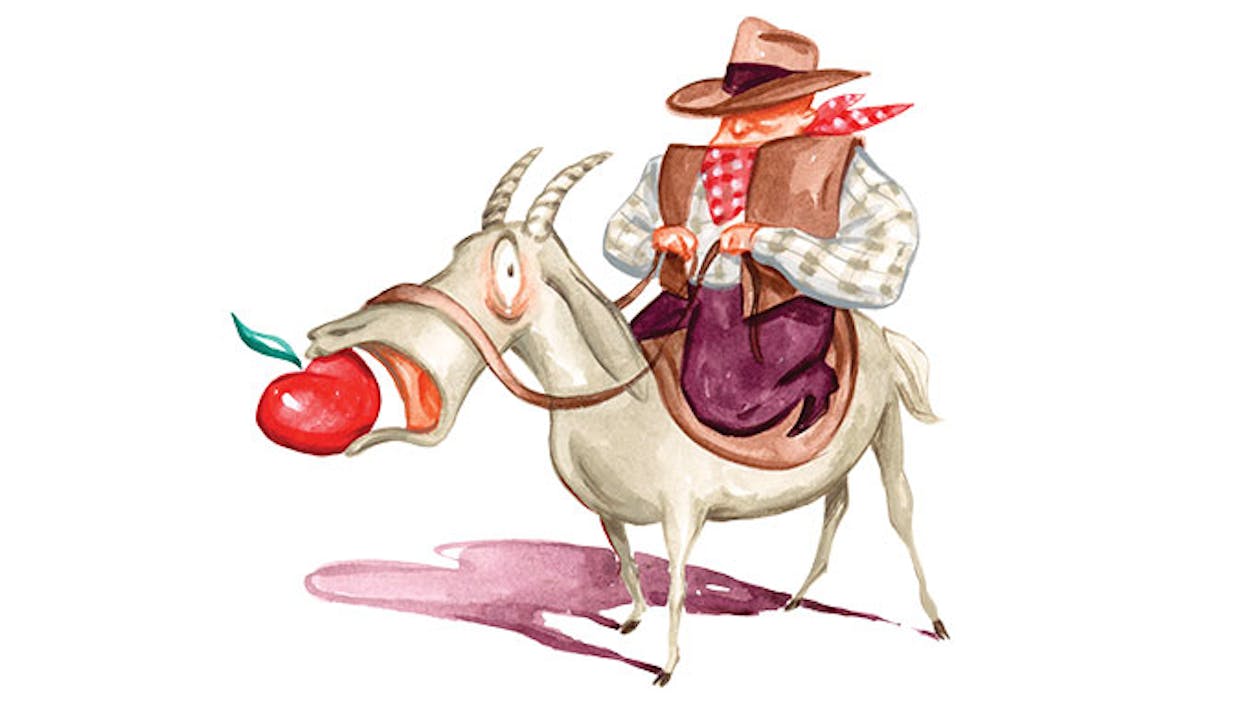Two hours before go time at the World Championship BBQ Goat Cook-off, in Brady, a fellow judge and I are surveying the cooking rigs. The smell of lighter fluid hangs heavy in the air as we walk past the booth of one contestant, where a nearly raw half carcass is roasting on a spit. “I hope we don’t get that one at our table,” my colleague whispers to me, despairing of the possibility of tasting gas fumes when he bites into his lunch. As it turns out, only one of the fifty dishes we sample reeks of eau de petroleum; most of the rest are smoky and succulent.
It makes sense that this 41-year-old cook-off, held on Labor Day weekend, takes place in the Hill Country; there are more goats being raised in this area than in any comparable region of the United States, and it’s been that way since the late-nineteenth century, when mohair (that is, goat wool) became an important industry. But for some reason the animal’s meat has never really caught on at local barbecue joints. Even places that offer chicken and turkey in addition to the standard beef and pork dishes usually don’t bother with goat.
Still, the truly motivated can find a few outposts of smoked goat even when the Brady cook-off (and the State Championship BBQ and Goat Cook-off, held every April in nearby Goldthwaite) isn’t happening. The two legendary Cooper’s joints, in Mason and Llano, serve excellent goat—the former’s goat-and-pork sausage is one of the more distinctive pieces of minced meat around—and the town of Brady itself boasts the Spread Pit BBQ, which offers a peppery, tender goat that tastes like a cross between lamb and pork.
But that’s pretty much it. Jason Wootan, who owns the Cooper’s in Llano, explains why most of his competitors avoid goat. “To be blunt, it’s high dollar, but you don’t make a lot of money at it,” he says. Wootan, for instance, charges $21.49 per pound. Goats, which eat shrubs, grain, and hay—not the tin cans and cigarette cartons of the popular imagination—don’t come cheap.
And goat meat may soon get even scarcer in these parts. In 1995 the federal wool and mohair subsidy, a decades-old program that had boosted the domestic goat industry, ended, greatly reducing the number of goats being raised in Texas. To make matters worse, the recent drought has forced many ranchers to sell their goats for slaughter rather than pay to maintain them. And the state’s energy boom has prompted an offsetting goat bust. “If you’re making x amount of money on oil and gas, then why chase goats around on a horse?” asks Ed Mayfield, a goat rancher in Sonora.
Skye Smith, who runs the Brady cook-off, has seen the effects of this up close. She’s in charge of purchasing the hundred or so goats required for the cook-off’s contestants, and each year she puts out a call for bids from potential suppliers. “When I first started, in ’08, we got three to five bids,” she says. “This year there were only two.”









